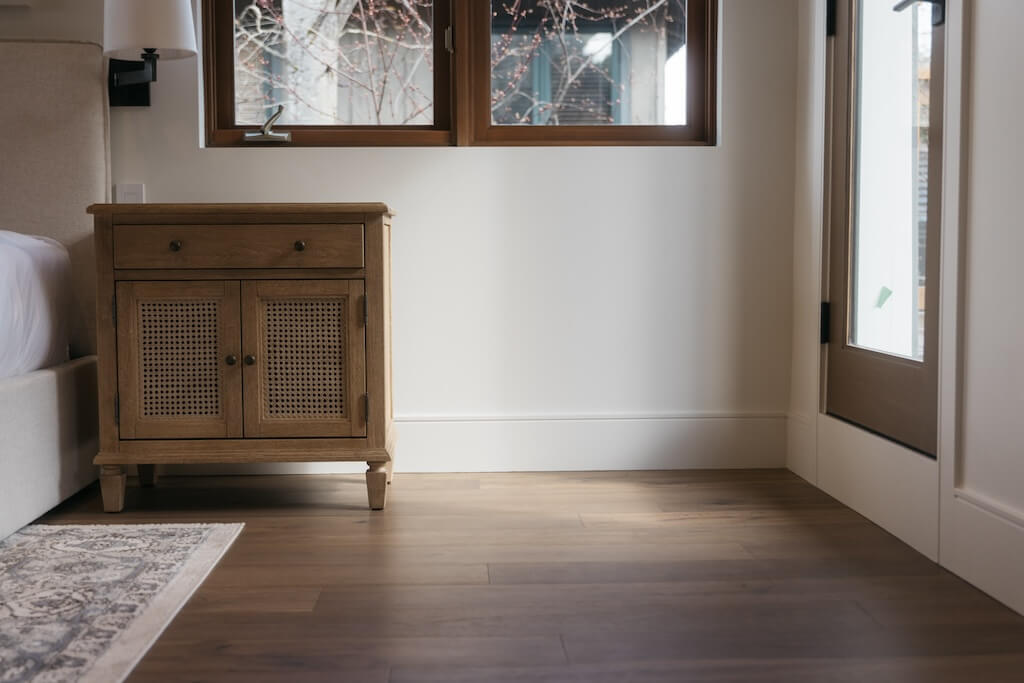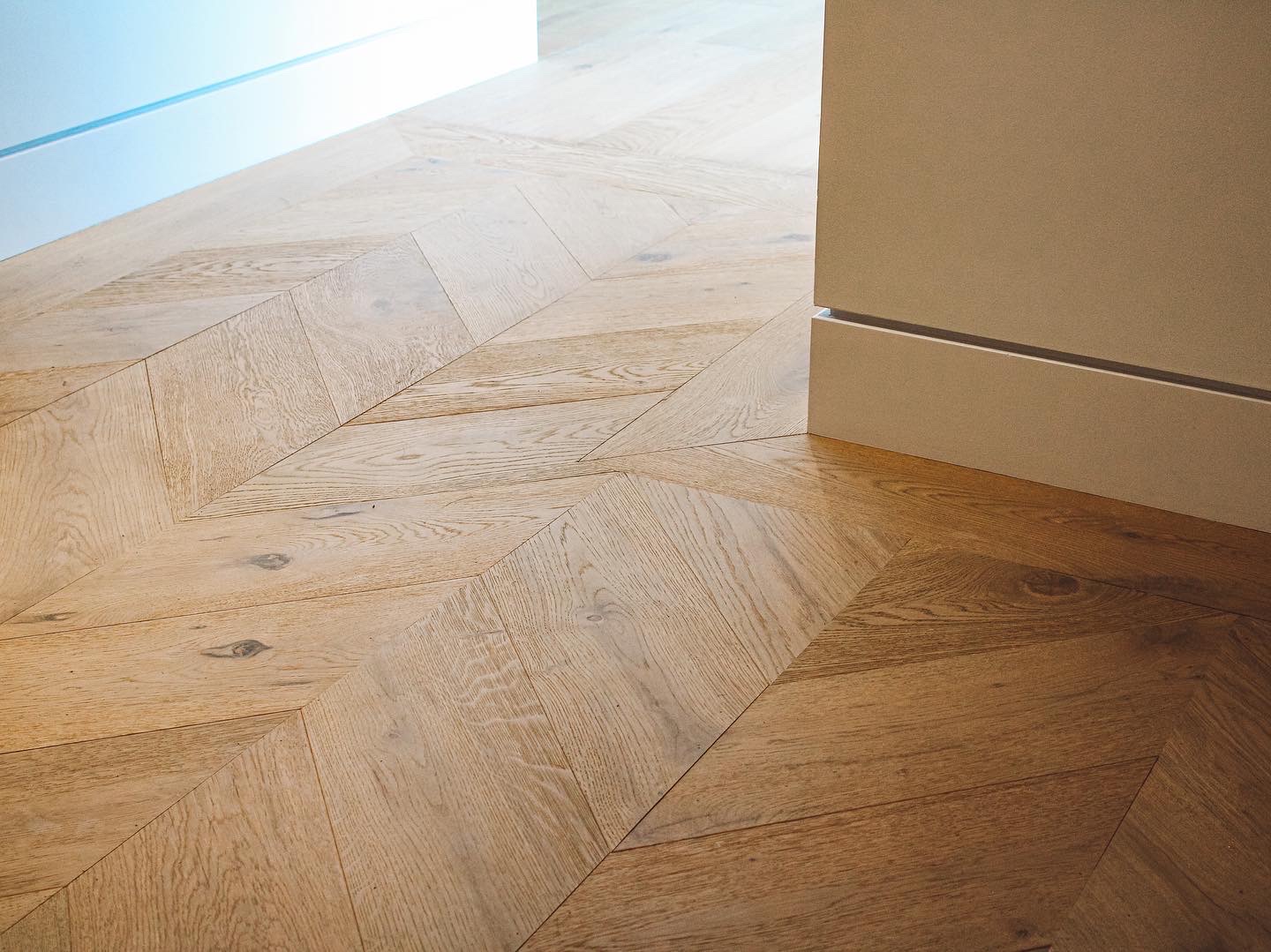Laminate flooring is a durable, stylish, and budget-friendly alternative to hardwood. This guide covers its benefits, installation tips, and why it’s a great choice for modern homes.
Introduction to Laminate Flooring
Laminate flooring has emerged as a favored alternative for homeowners desiring the aesthetic of hardwood or tile without the hefty price tag. So, what exactly is laminate flooring? In essence, it’s a man-made product designed to replicate the appearance of natural materials like wood or stone. It’s a superb choice for those seeking durability, style, and affordability. Over the years, laminate flooring has transformed from a budget-friendly option to a chic, adaptable flooring solution fit for a wide range of home environments.
What Is Laminate Flooring Made Of?
Laminate flooring is composed of several layers working harmoniously to produce a robust and visually appealing surface. Typically, laminate flooring features four essential layers:
Wear Layer: This top layer defends against scratches, stains, and wear.
Design Layer: Beneath the wear layer is a high-definition image, often depicting wood, stone, or tile, which gives the floor its aesthetic charm.
Core Layer: Made from high-density fiberboard (HDF), this layer provides the structure and stability of the plank.
Backing Layer: The foundation of the flooring helps protect against moisture and assists in installation.
Types of Laminate Flooring
There are various kinds of laminate flooring, each offering different strengths:
High-Pressure Laminate (HPL): Known for its superior durability, HPL is ideal for areas with heavy foot traffic.
Direct-Pressure Laminate (DPL): More common in homes, DPL is durable yet affordable and suited for everyday use
Waterproof vs. Water-Resistant: While many laminates are water-resistant, there are waterproof versions that can withstand moisture-rich areas like bathrooms and kitchens.
Pros of Laminate Flooring
There are various kinds of laminate flooring, each offering different strengths:
Exceptional Durability: Laminate is renowned for its resistance to scratches and damage, making it a reliable choice for homes with children or pets.
Affordable Pricing: One of the greatest benefits of laminate flooring is its cost-effectiveness, offering the visual appeal of hardwood or tile without the financial strain.
Easy to Install: Thanks to the click-and-lock system, even DIY enthusiasts can install laminate flooring with relative ease.
Aesthetic Variety: Laminate comes in an impressive range of colors, textures, and patterns, mimicking the appearance of numerous natural materials such as oak, marble, or slate.
Low Maintenance: It’s easy to care for laminate flooring—regular sweeping or vacuuming is often enough to keep it looking pristine.
Cons of Laminate Flooring
Vulnerability to Moisture: Unless you choose a waterproof option, laminate isn’t well-suited for high-moisture areas like bathrooms or basements.
Limited Refinishing Capabilities: Unlike hardwood, laminate cannot be sanded or refinished. Once it’s damaged, the affected planks typically need replacing.
Sound and Noise Issues: Without proper underlayment, laminate can create a hollow or noisy sound underfoot, particularly in larger rooms.
Hard Surface: Some people may find laminate less comfortable to walk on compared to materials like carpet or vinyl. Area rugs can help alleviate this issue.
Laminate Flooring vs. Hardwood Flooring
When comparing laminate to hardwood flooring, there are some clear distinctions:
Appearance: Although laminate can mimic the look of wood, it lacks the natural grain and texture of authentic hardwood.
Cost: Hardwood is substantially more expensive, both in terms of materials and installation.
Ease of Installation: Laminate is significantly easier to install, making it an ideal DIY project, while hardwood generally requires professional help.
Laminate Flooring vs. Vinyl Plank Flooring
Laminate and vinyl plank flooring are often compared due to their popularity as hardwood alternatives. Here’s a breakdown of their differences:
Durability: Vinyl plank flooring offers better water resistance, making it a more suitable choice for wet areas like kitchens or bathrooms.
Feel: While both replicate the look of wood or stone, vinyl tends to offer a softer, warmer feel underfoot.
Laminate flooring is a versatile, durable, and cost-effective solution for homeowners looking to enhance their living space. While it may have limitations—such as sensitivity to moisture and the inability to refinish—it remains an excellent choice for many parts of the home. With its wide array of designs, ease of installation, and minimal maintenance, laminate flooring continues to be a popular flooring option.
FAQs
Can laminate flooring be installed in bathrooms? Yes, but only if you choose a waterproof laminate product to prevent moisture damage.
How long does laminate flooring last? With proper maintenance, laminate flooring can last anywhere from 15 to 25 years.
Is laminate flooring pet-friendly? Absolutely. Laminate’s durability makes it a fantastic option for households with pets.
What’s the best way to clean laminate flooring? Use a damp mop or a cleaner specifically designed for laminate. Avoid excess water, as it can seep into the seams.
Can laminate be installed over existing floors? Yes, laminate can be installed over most existing floors, provided they are clean, dry, and level.






